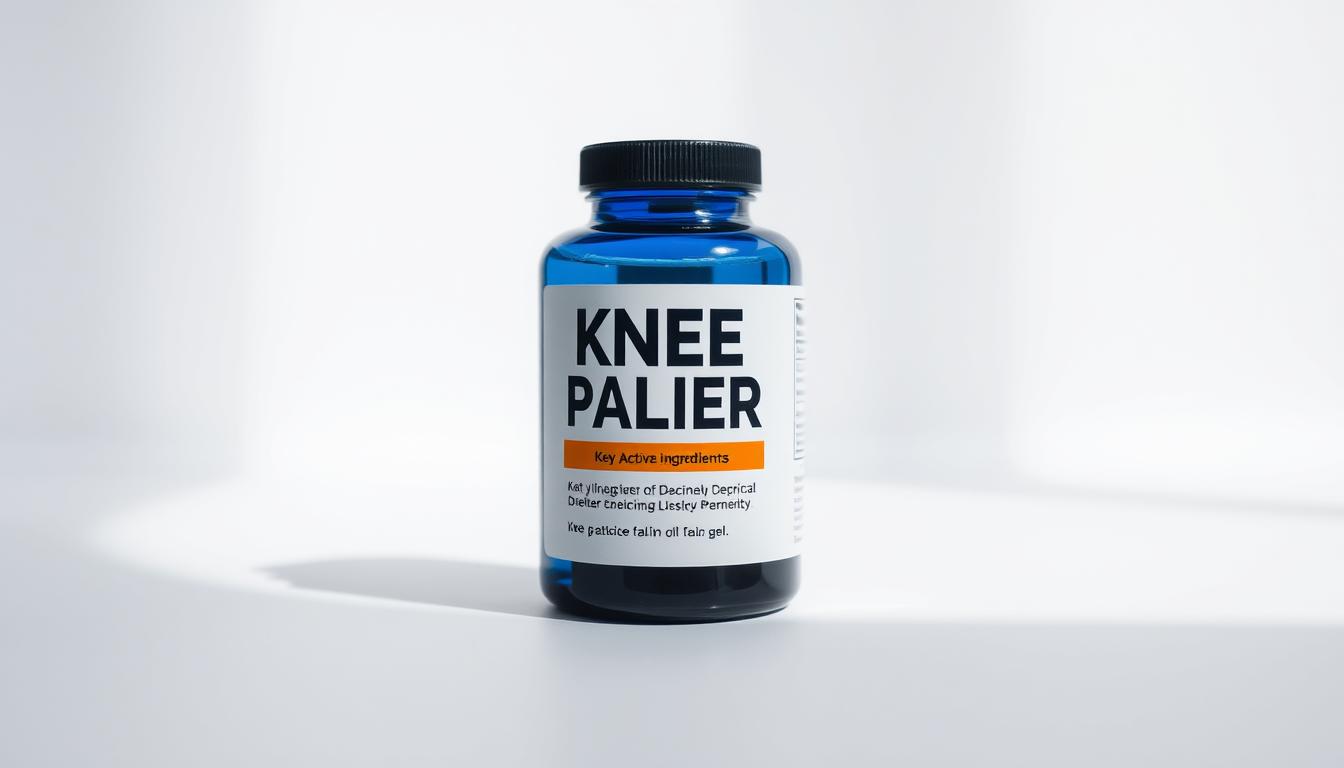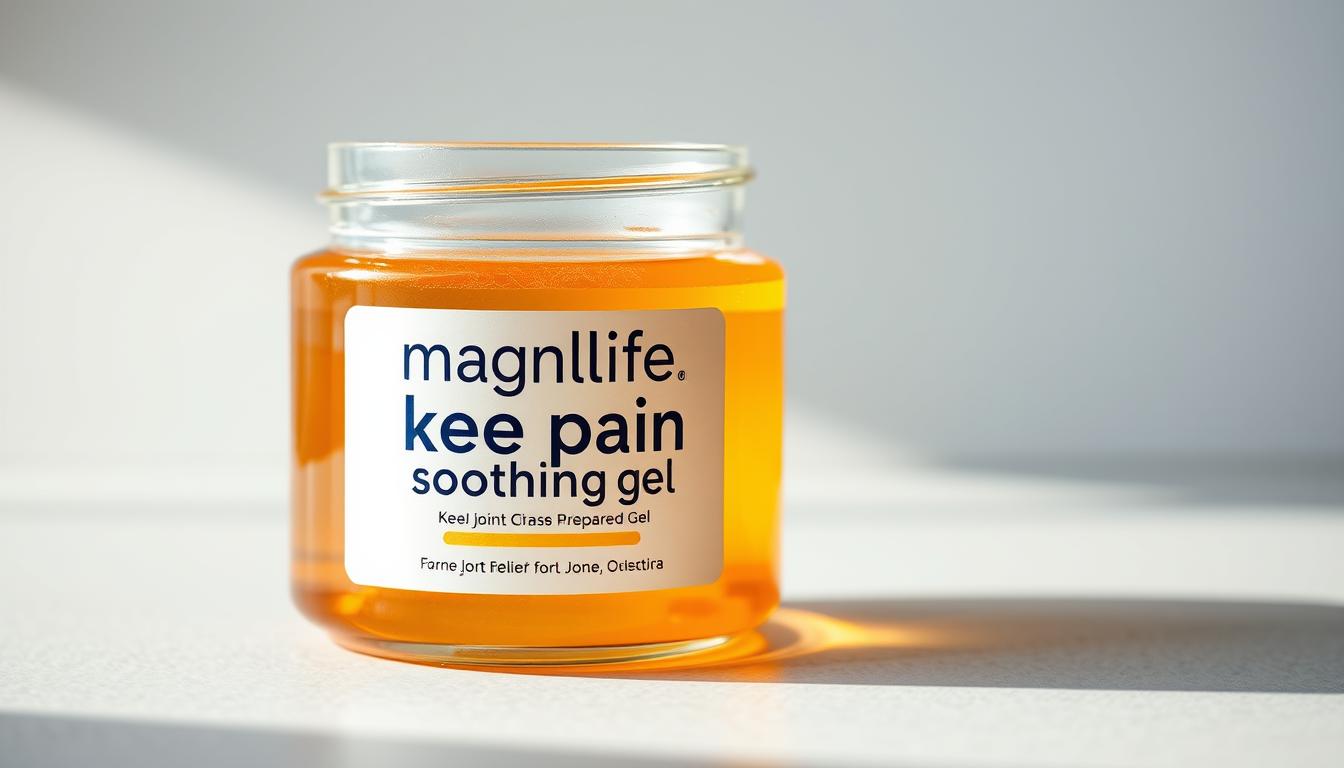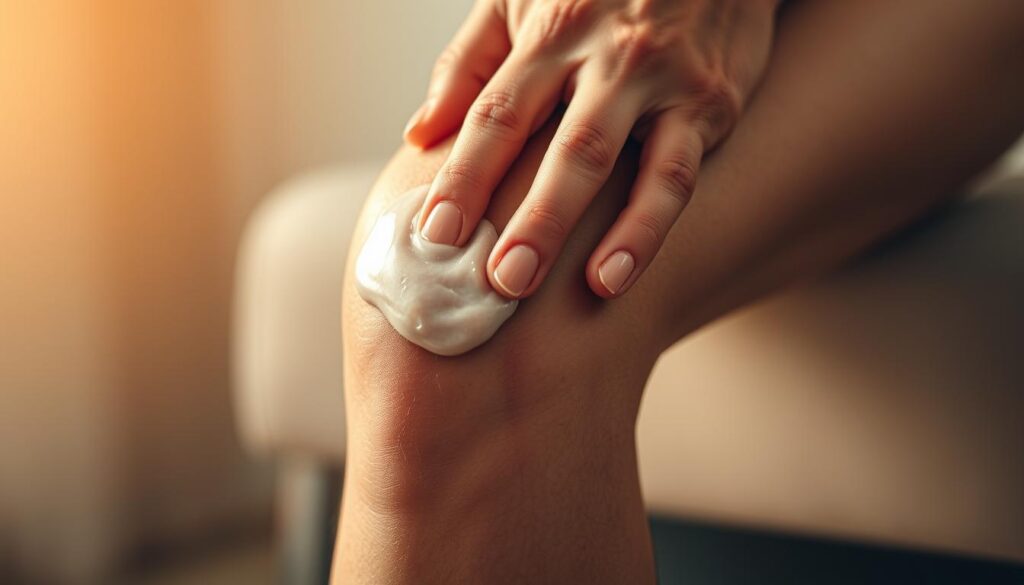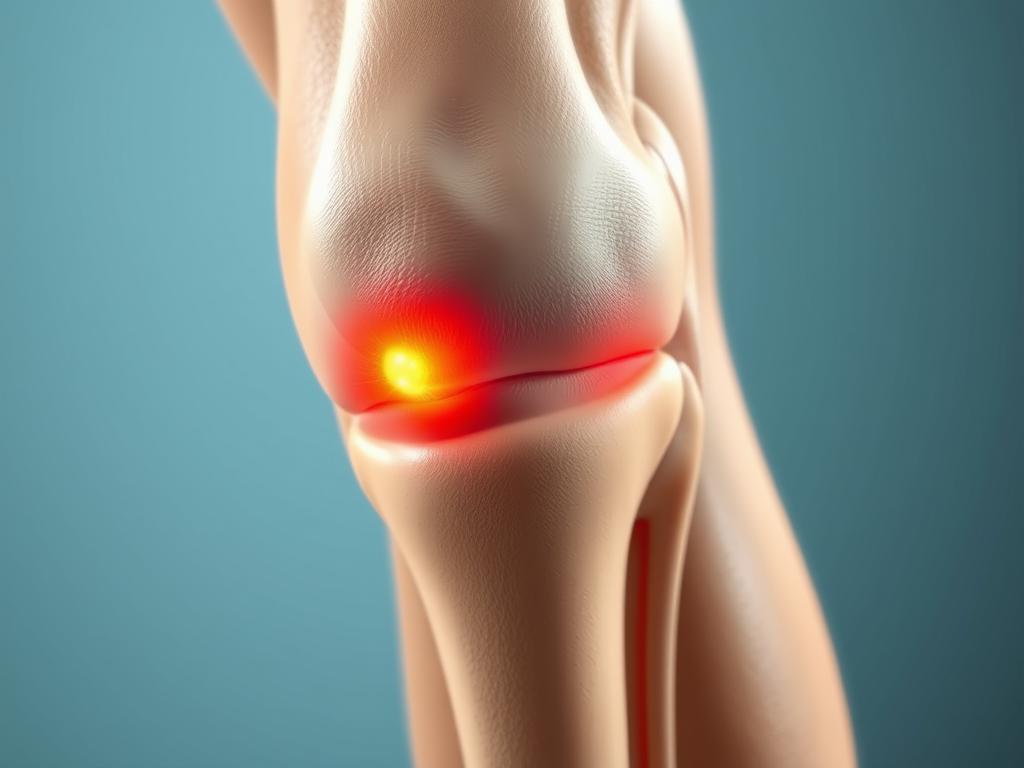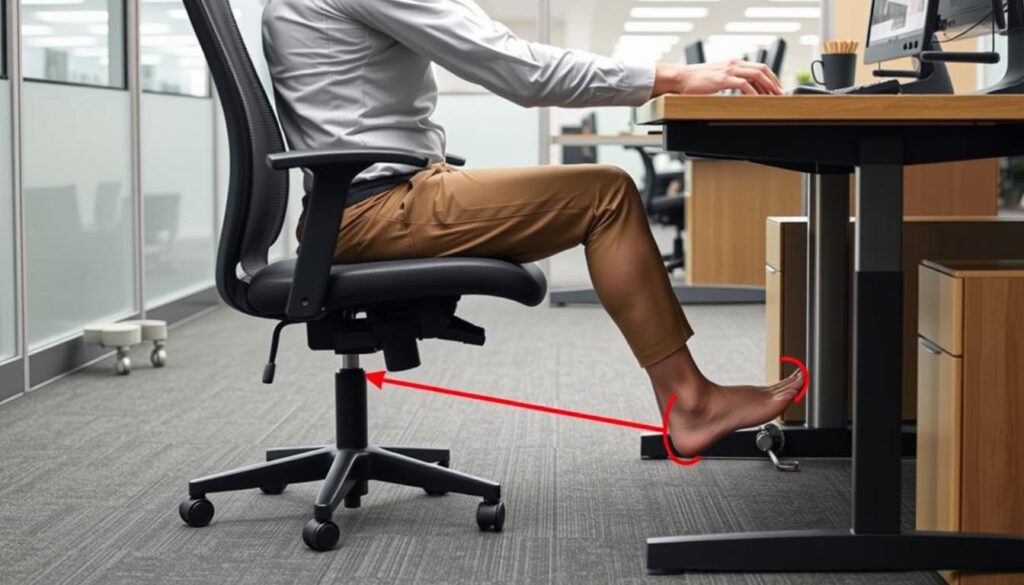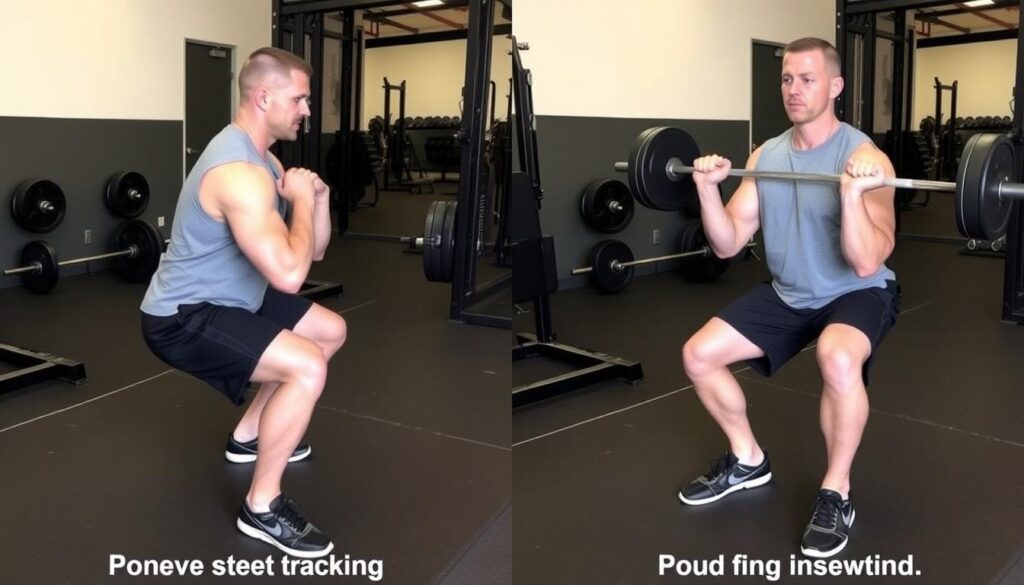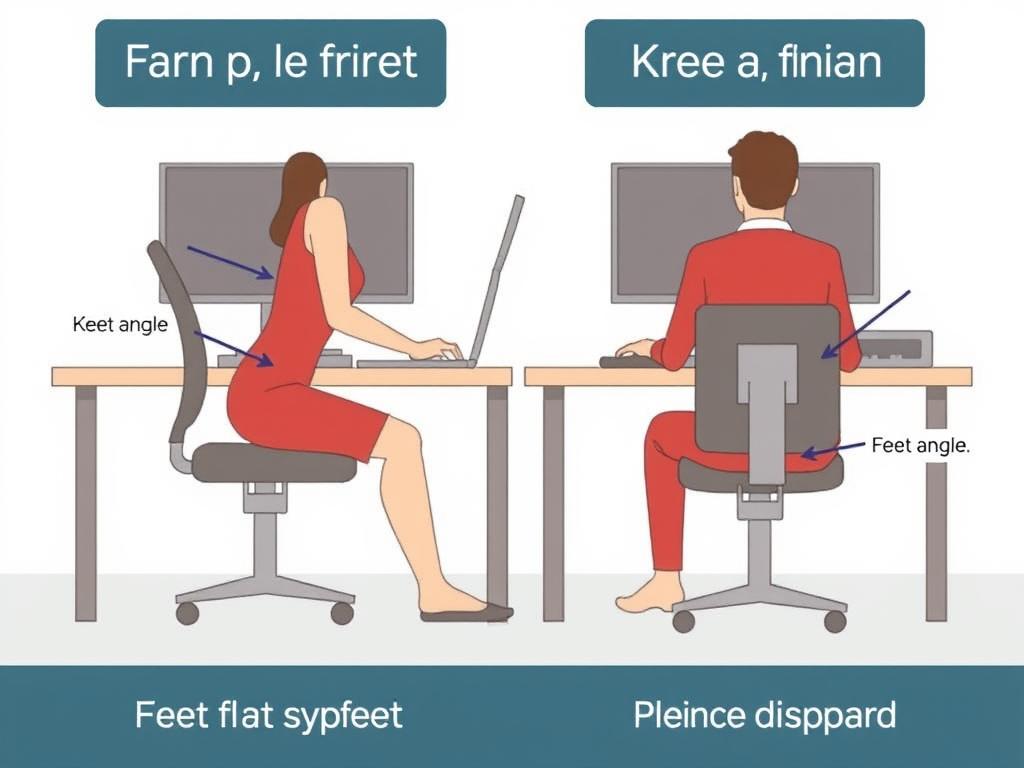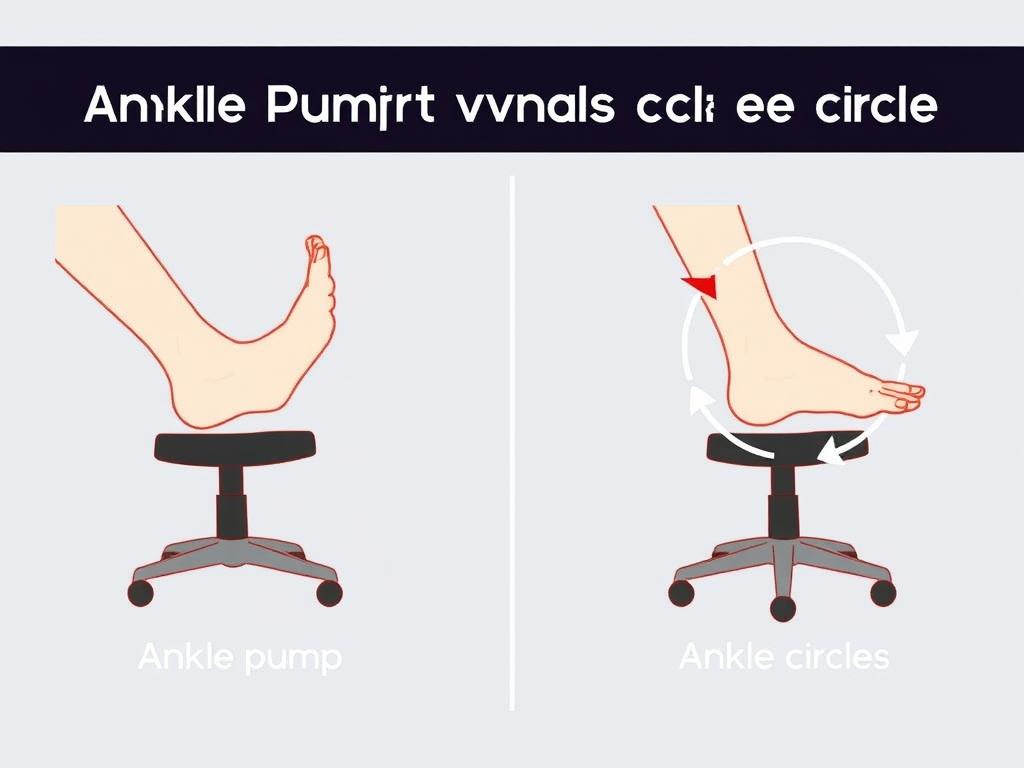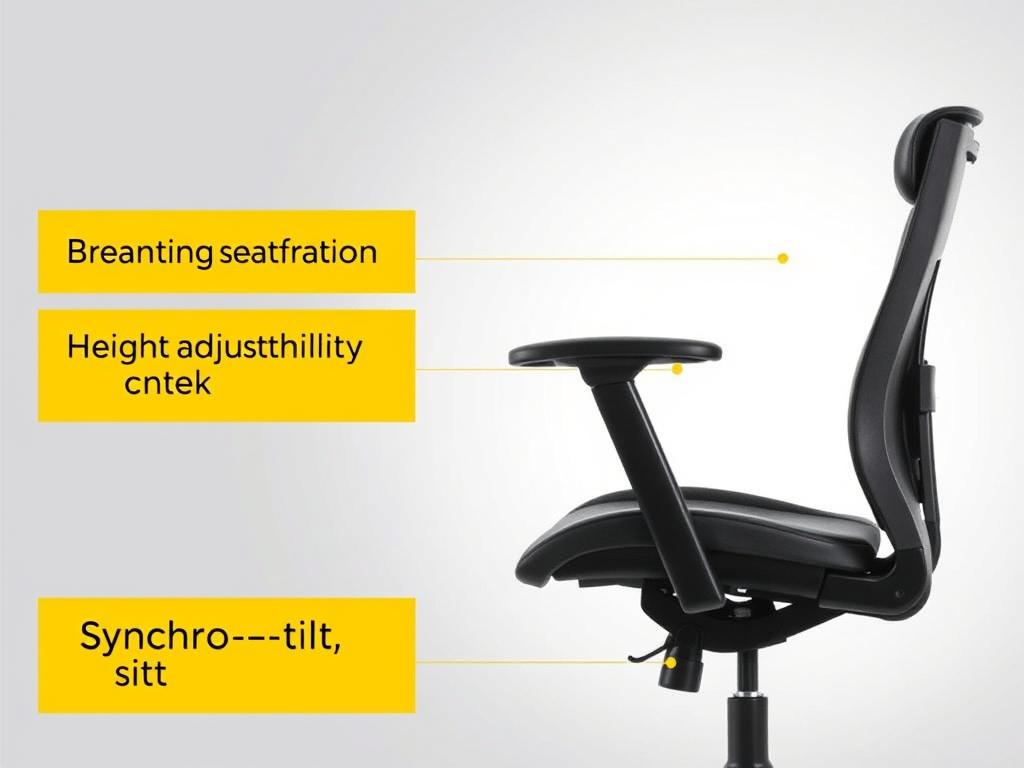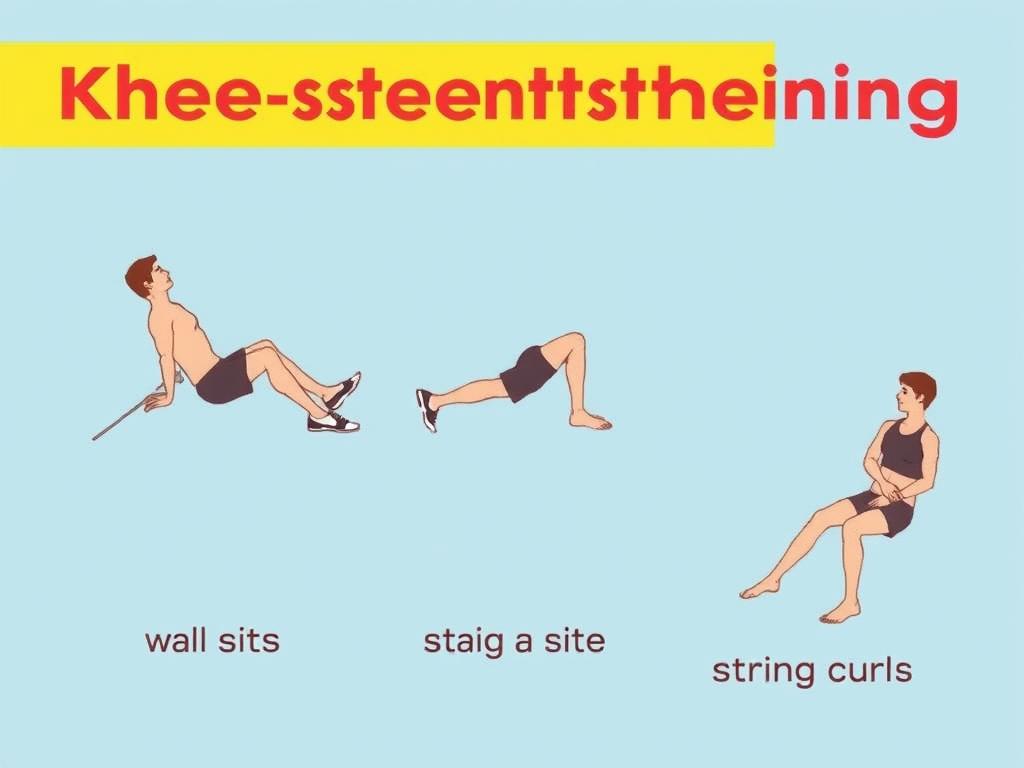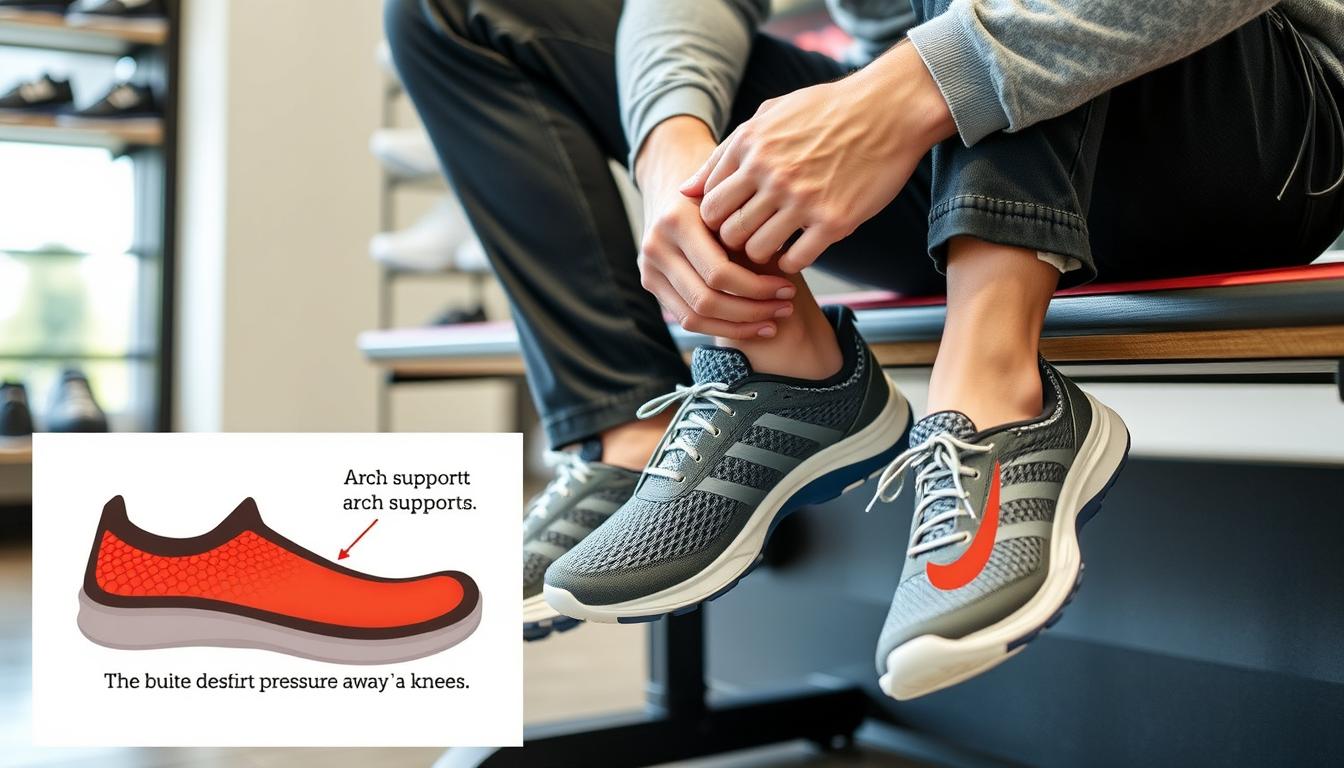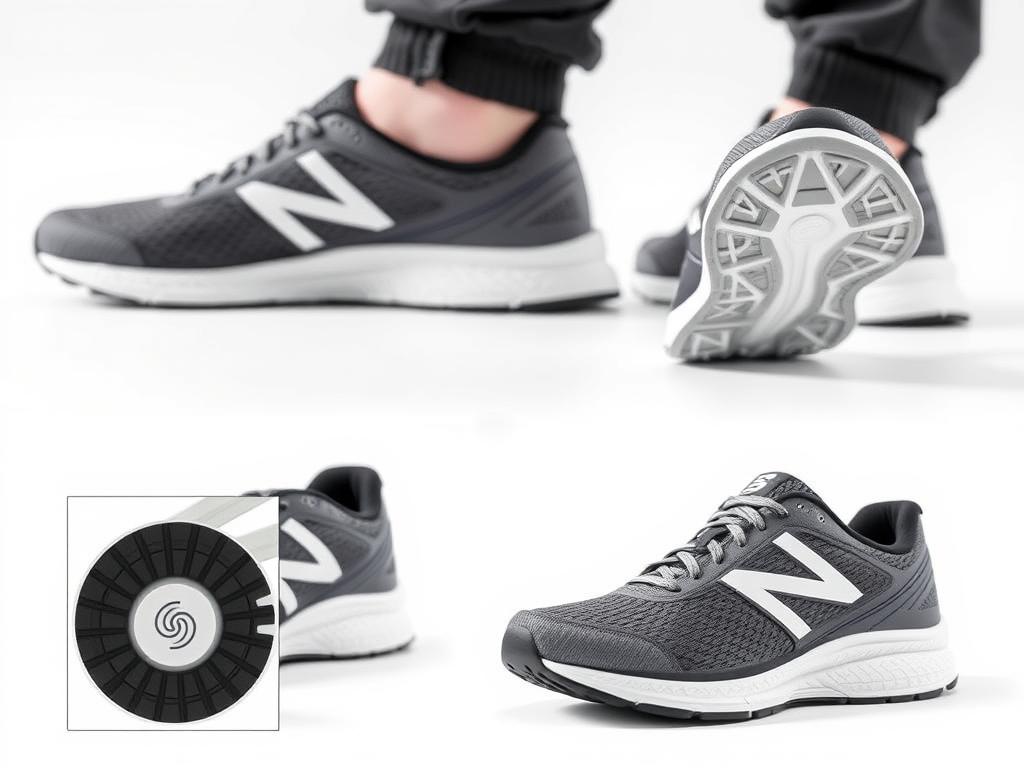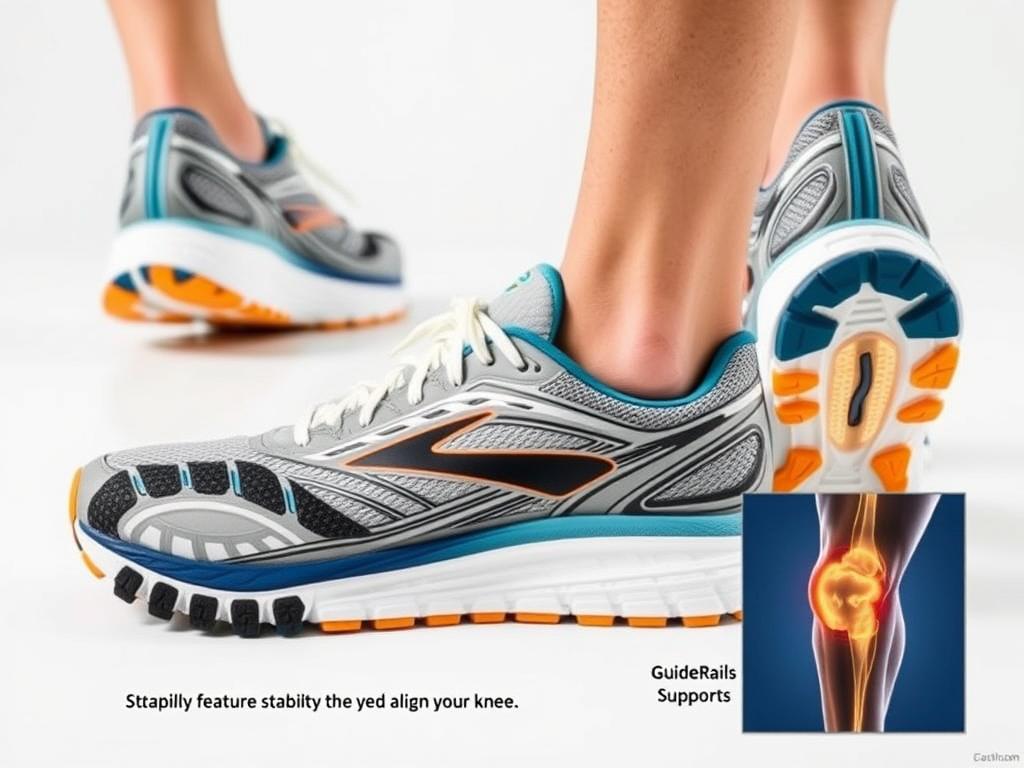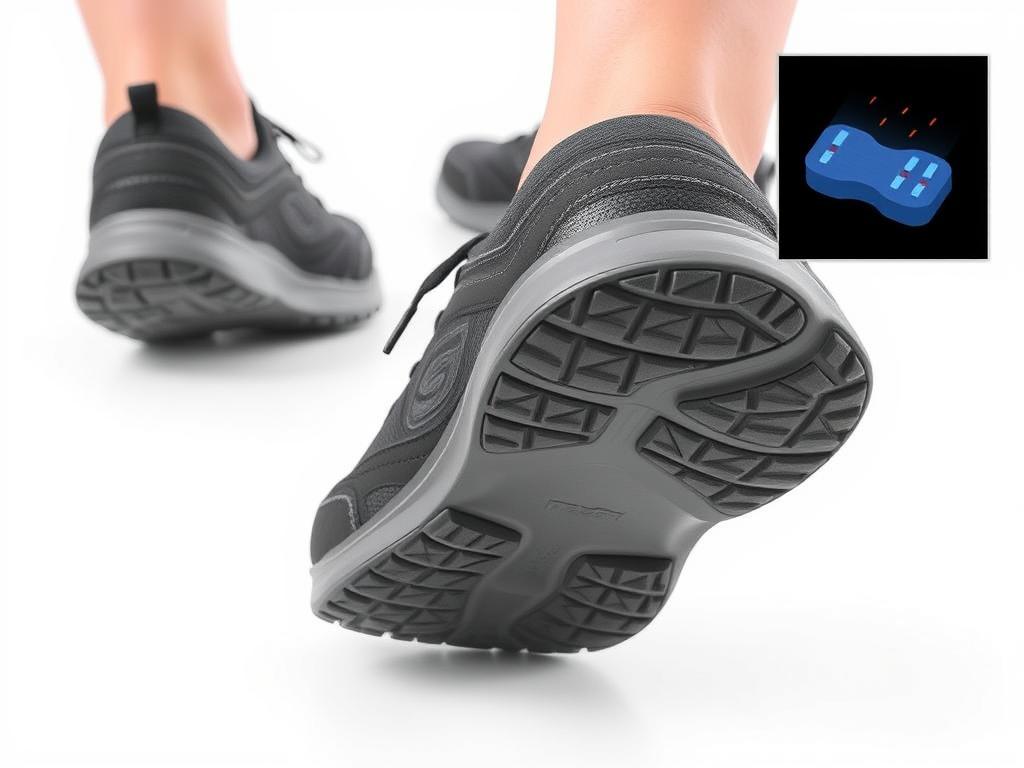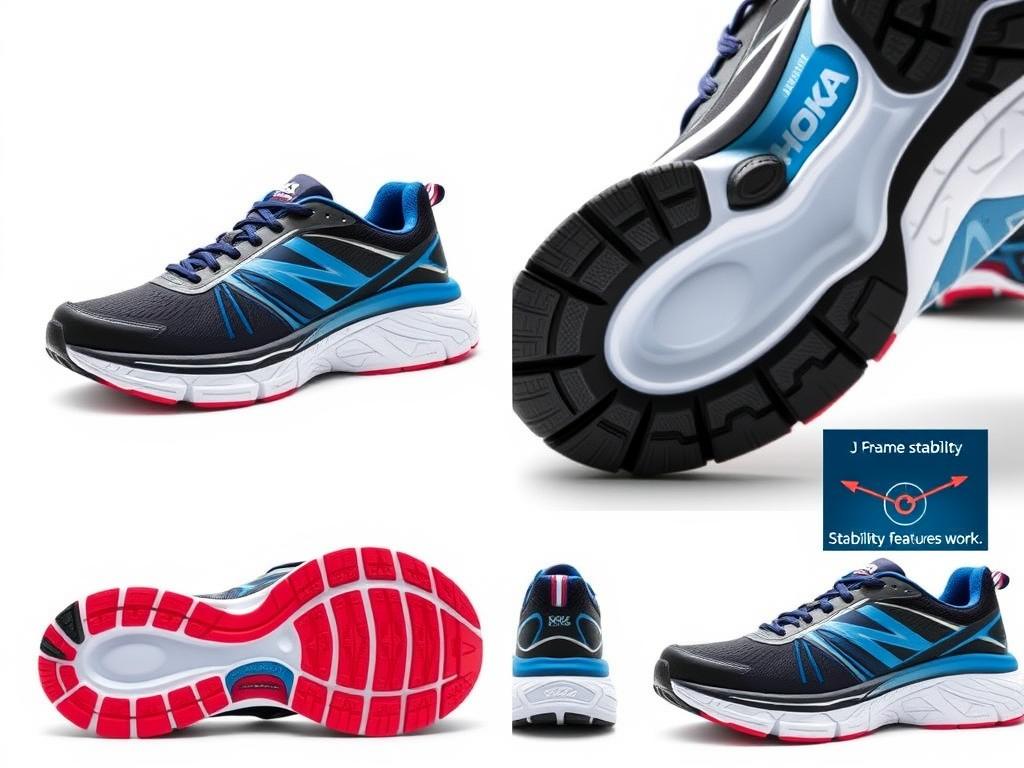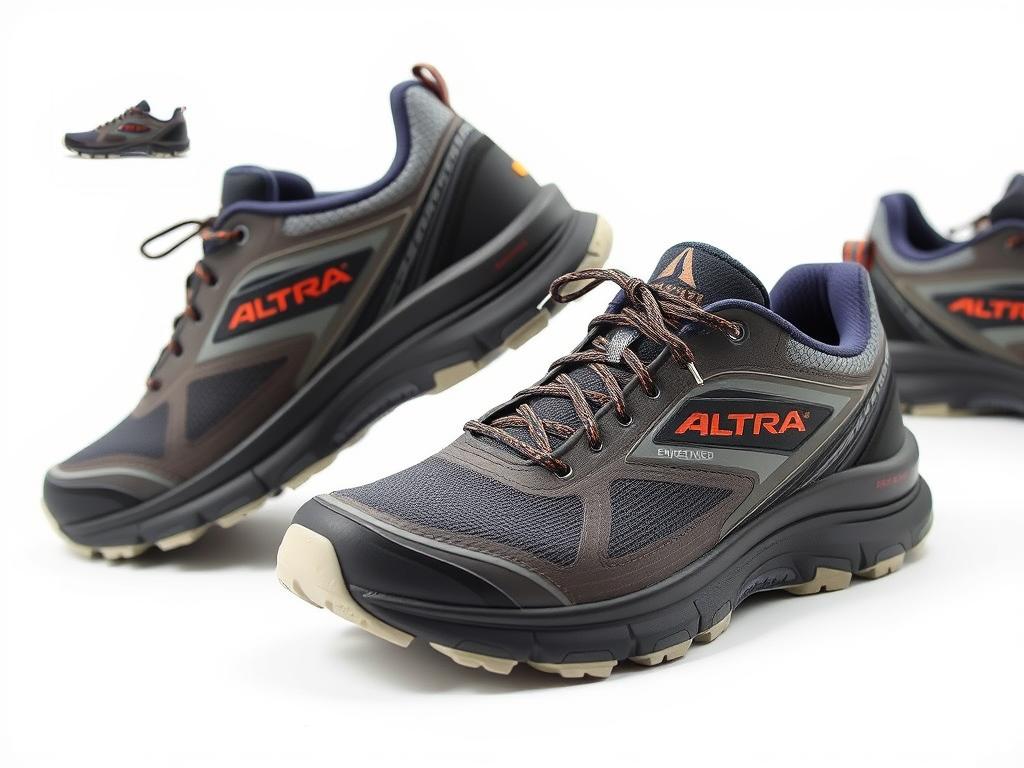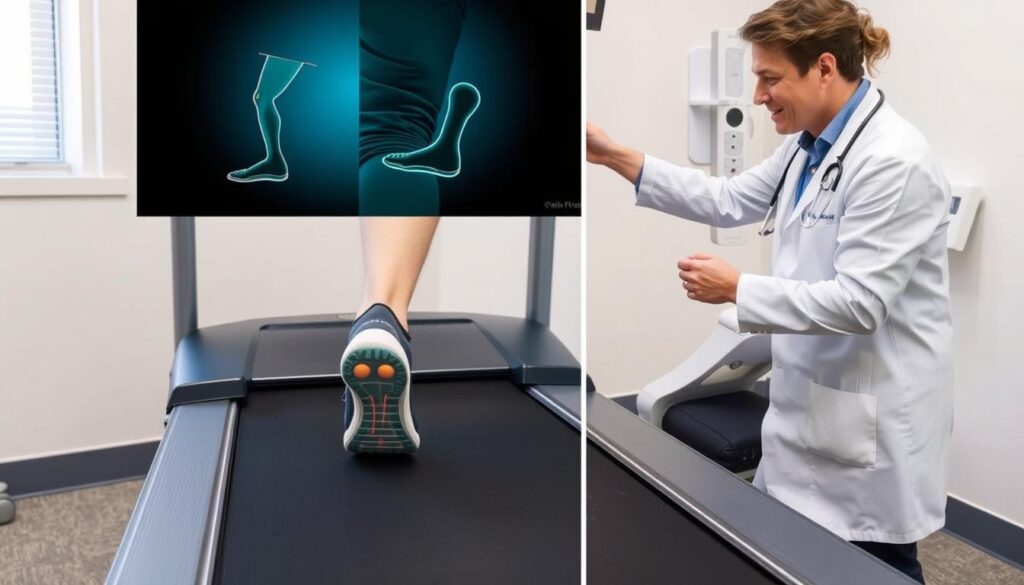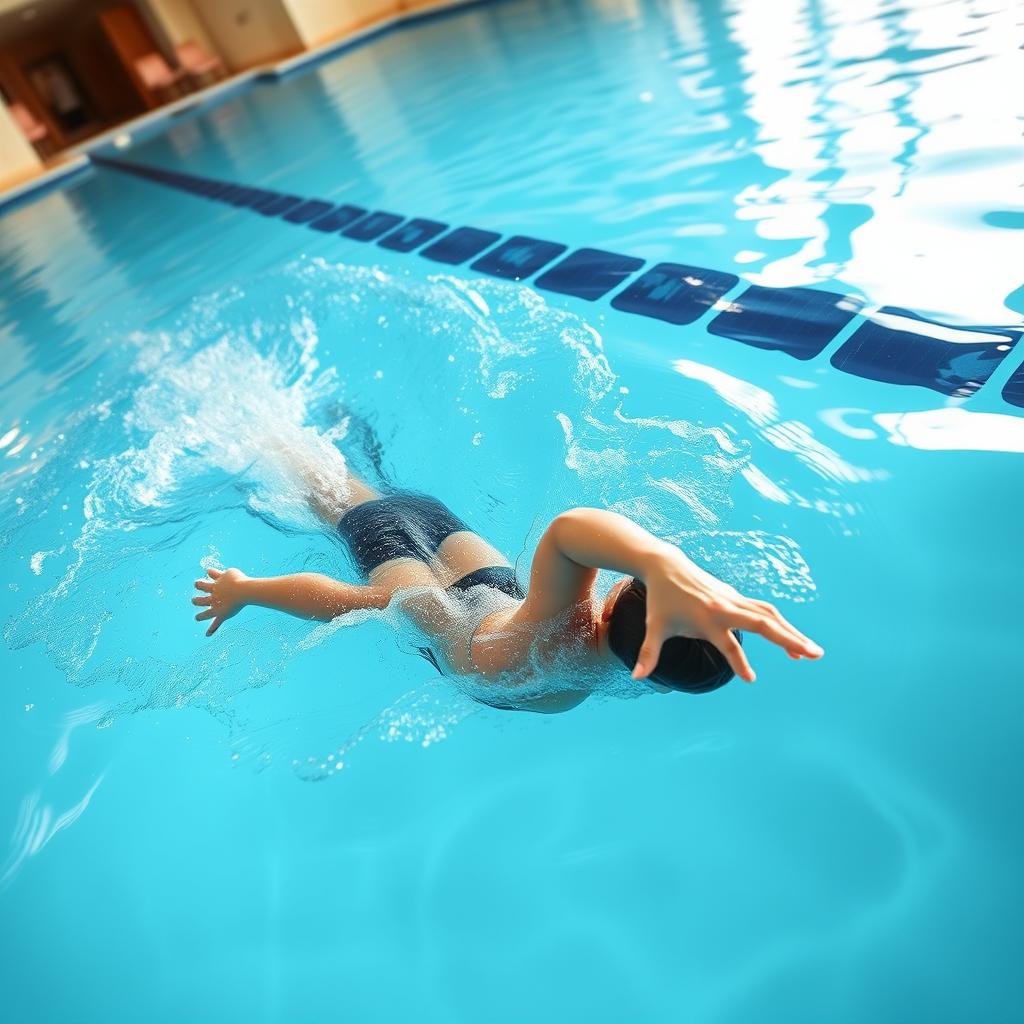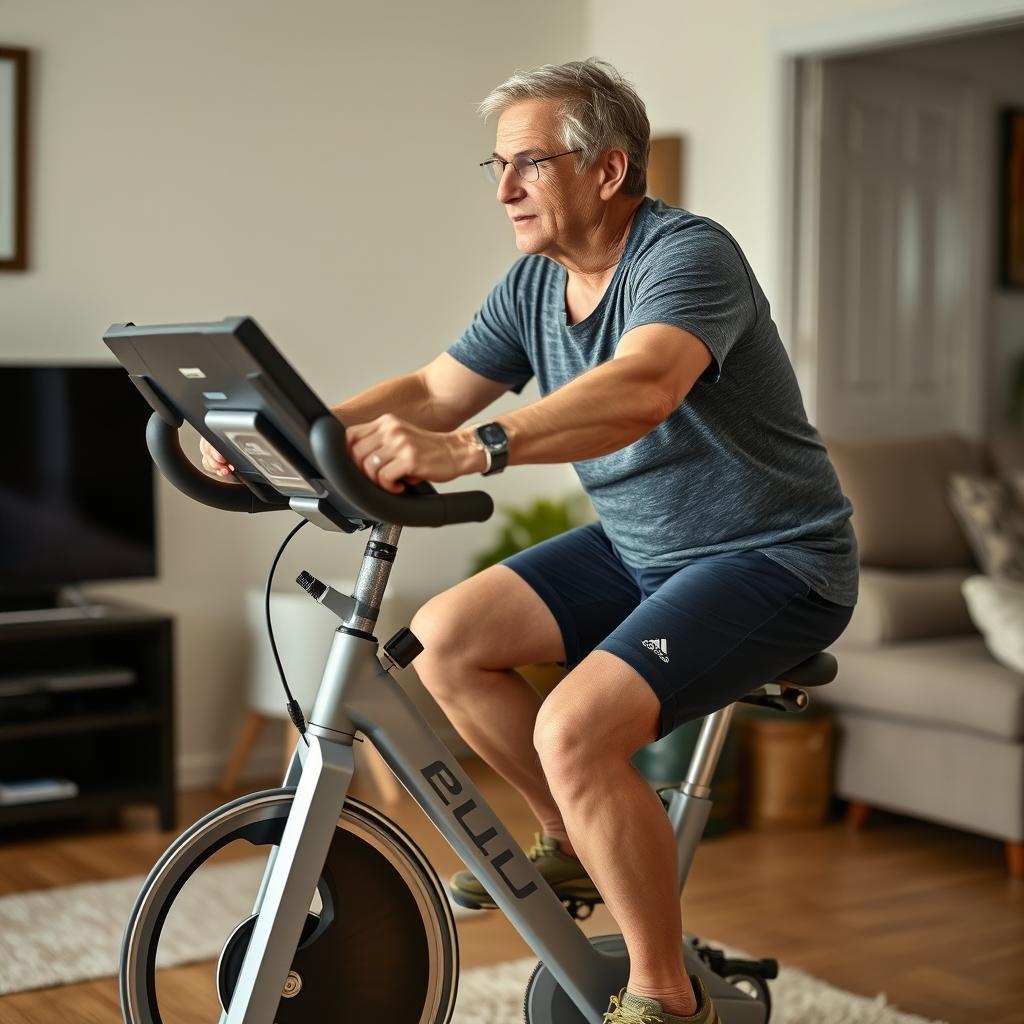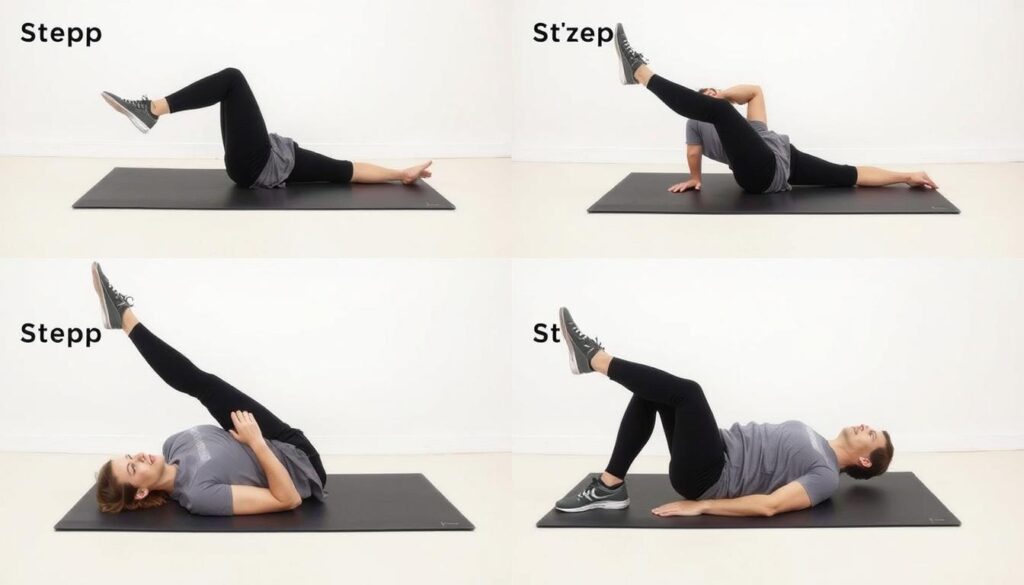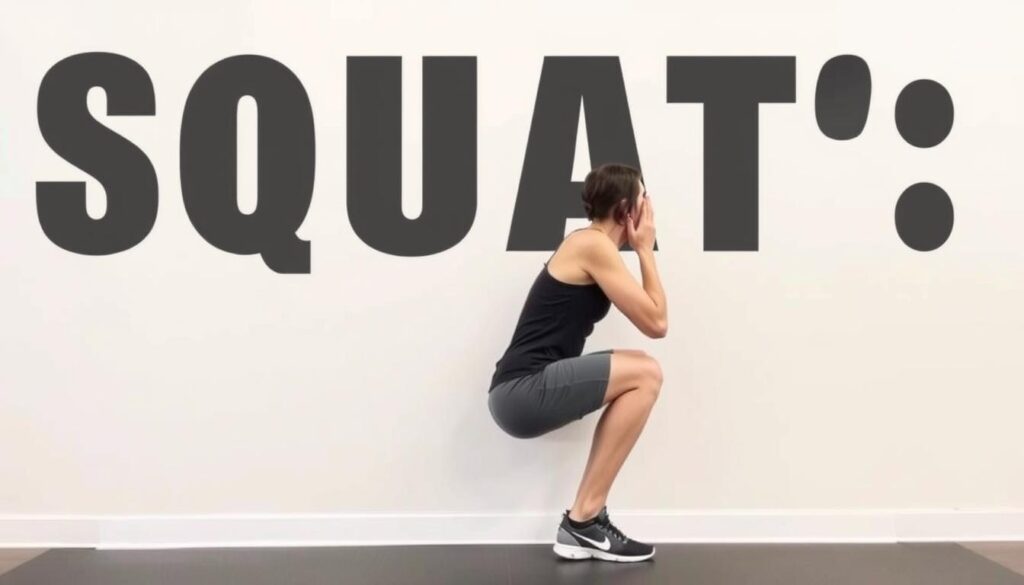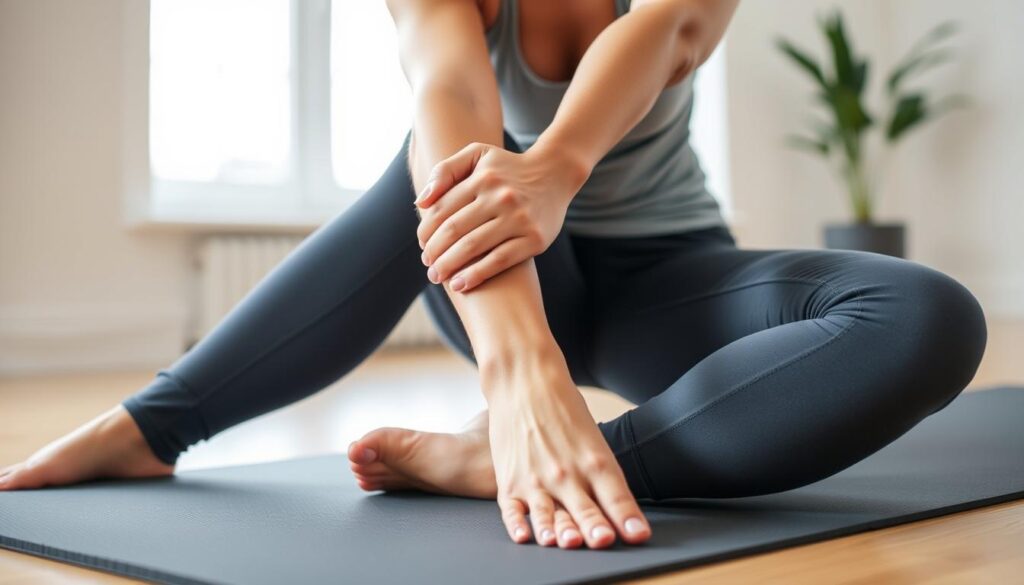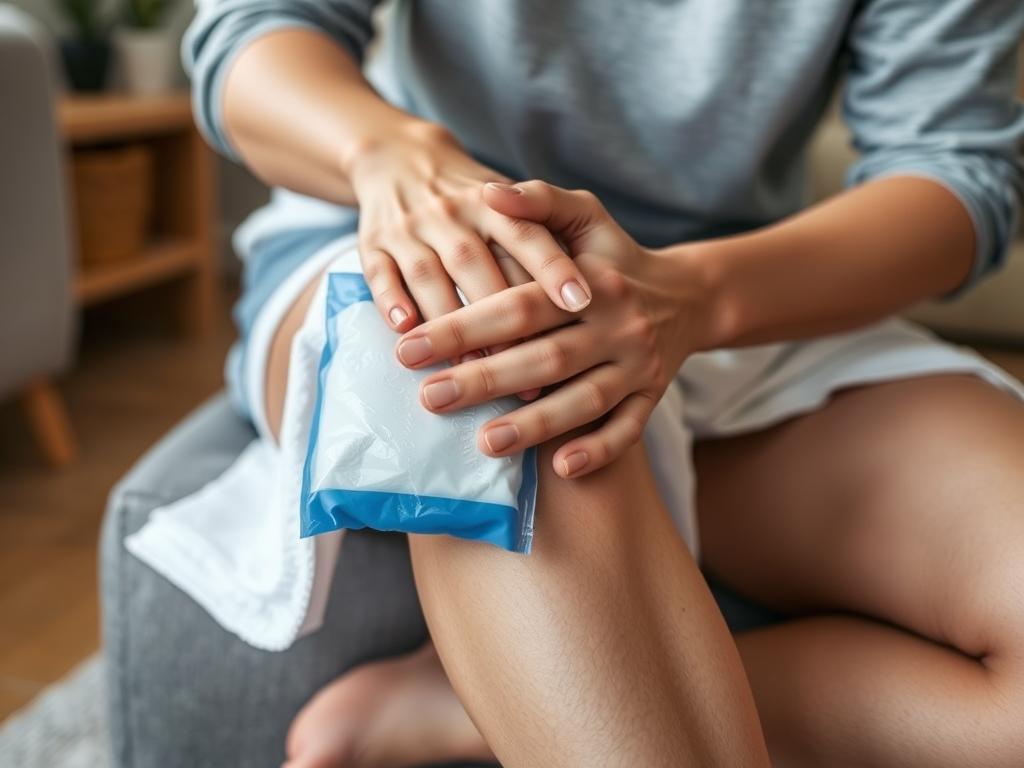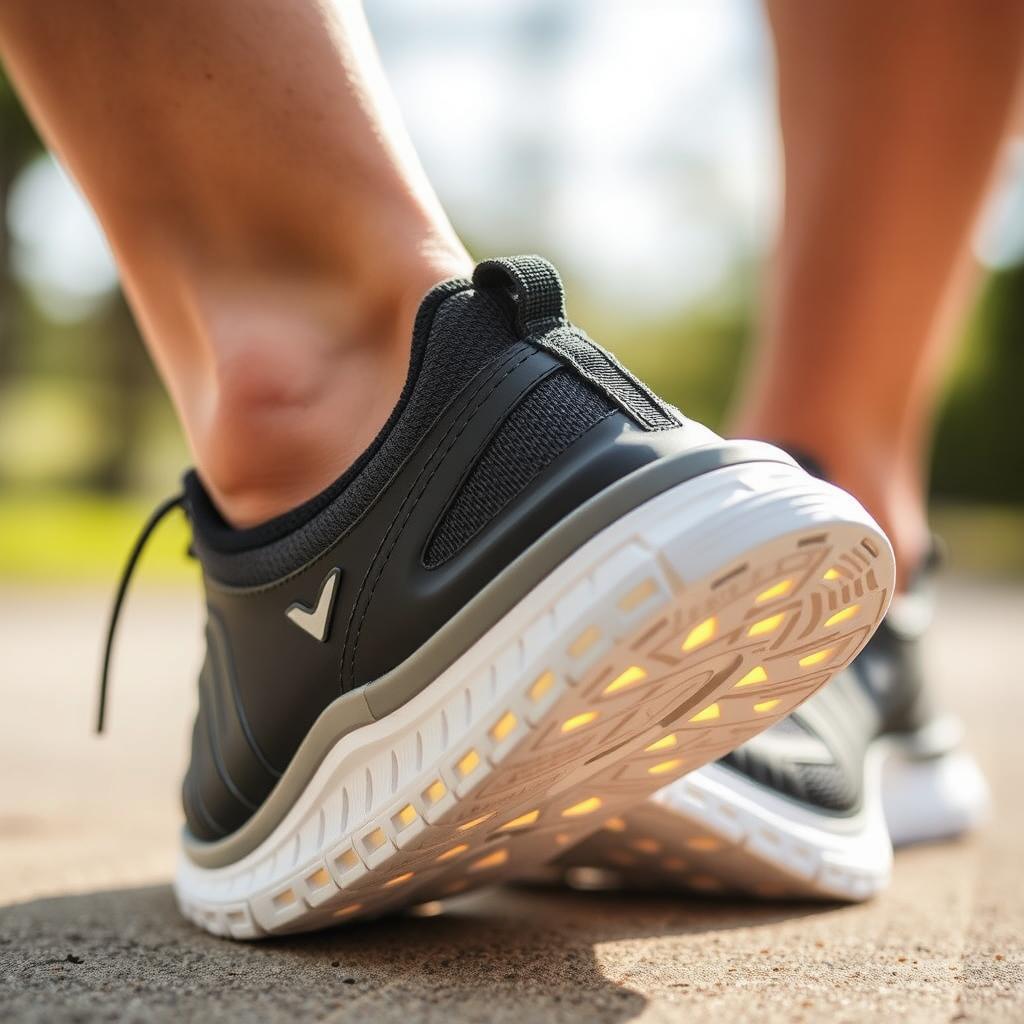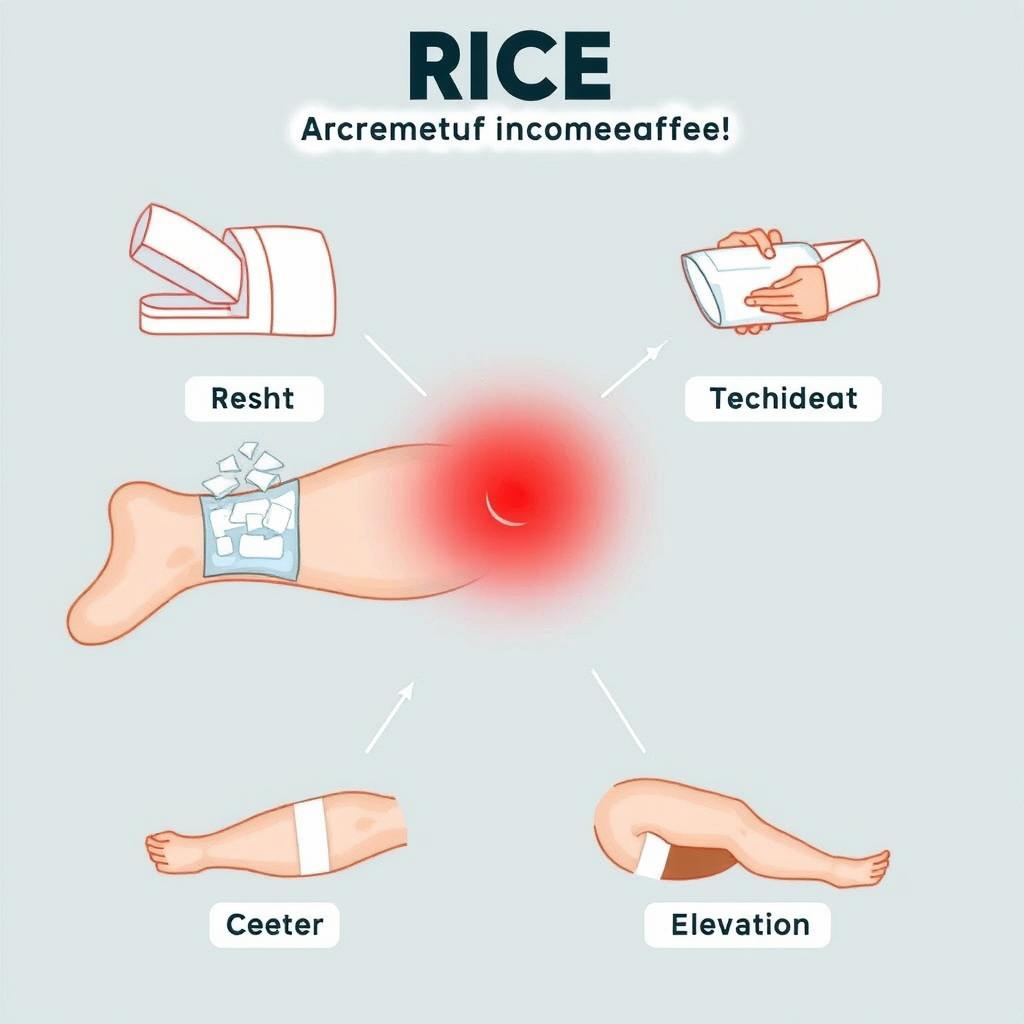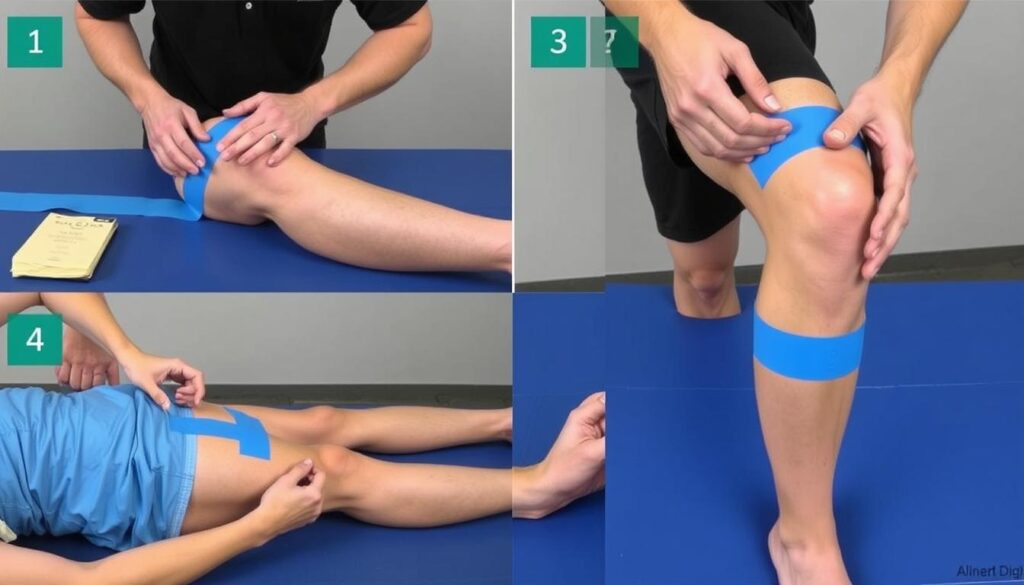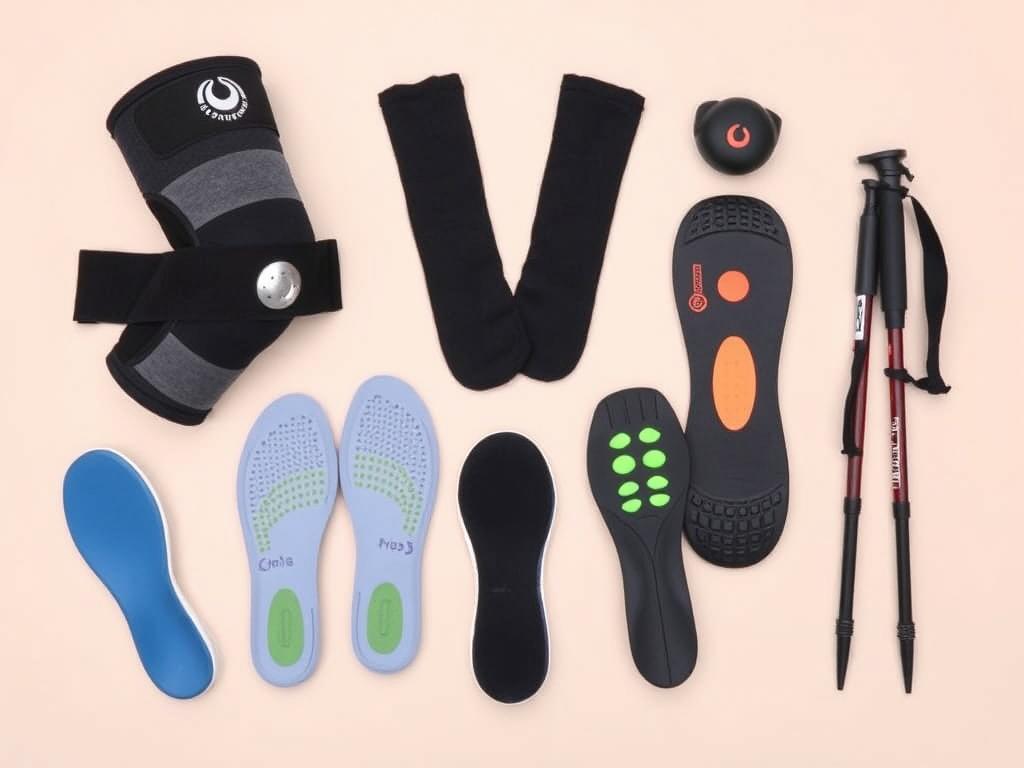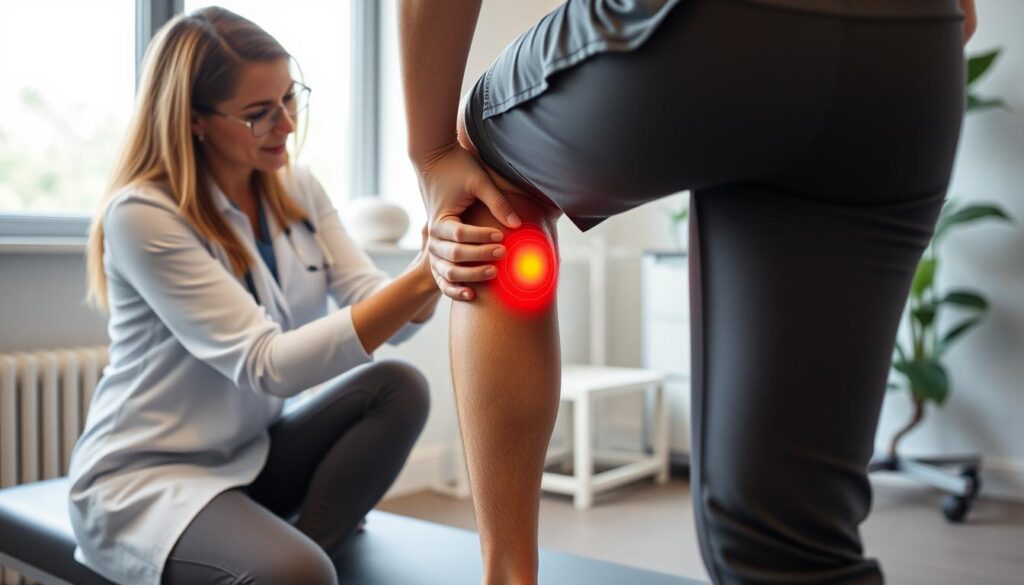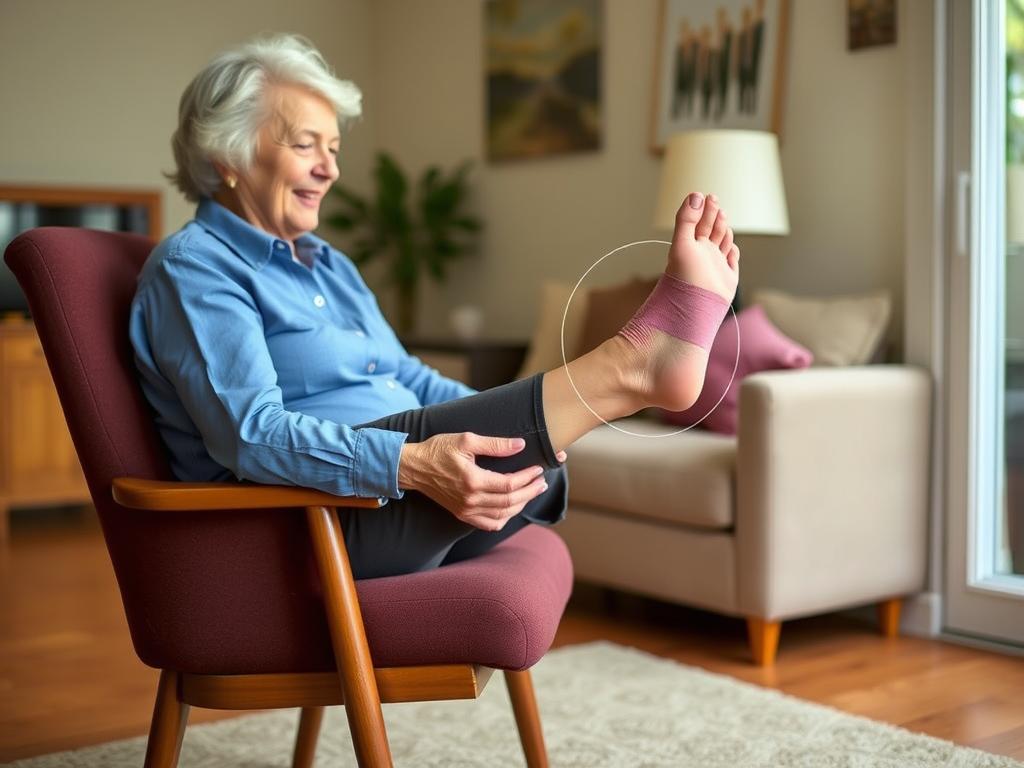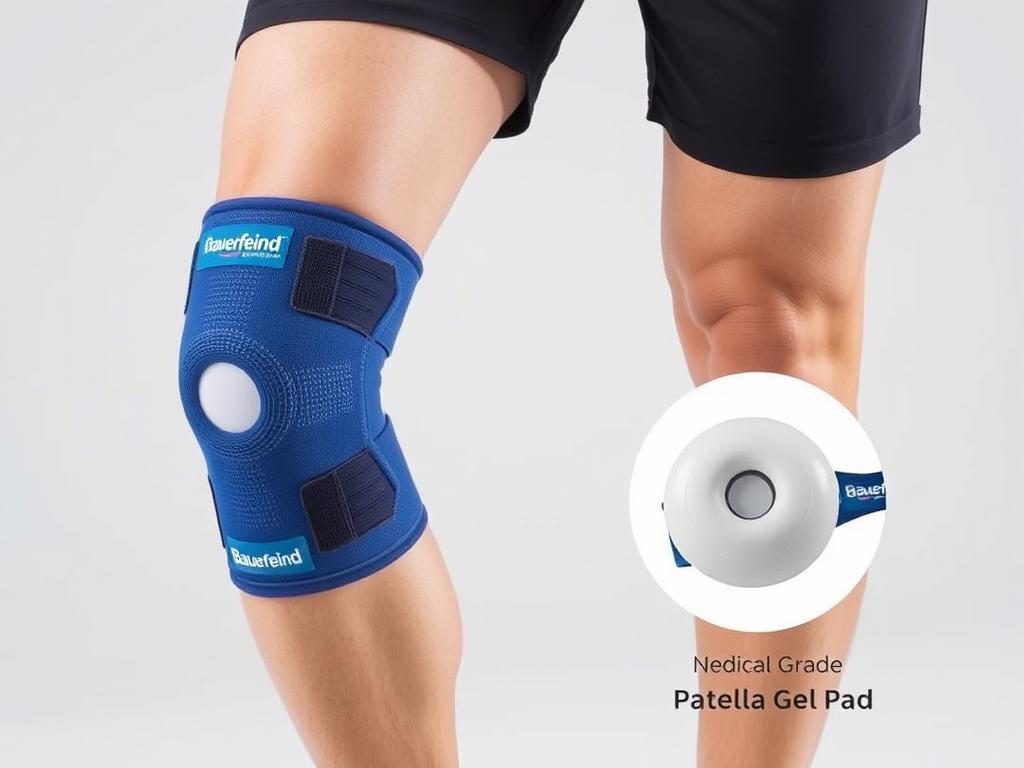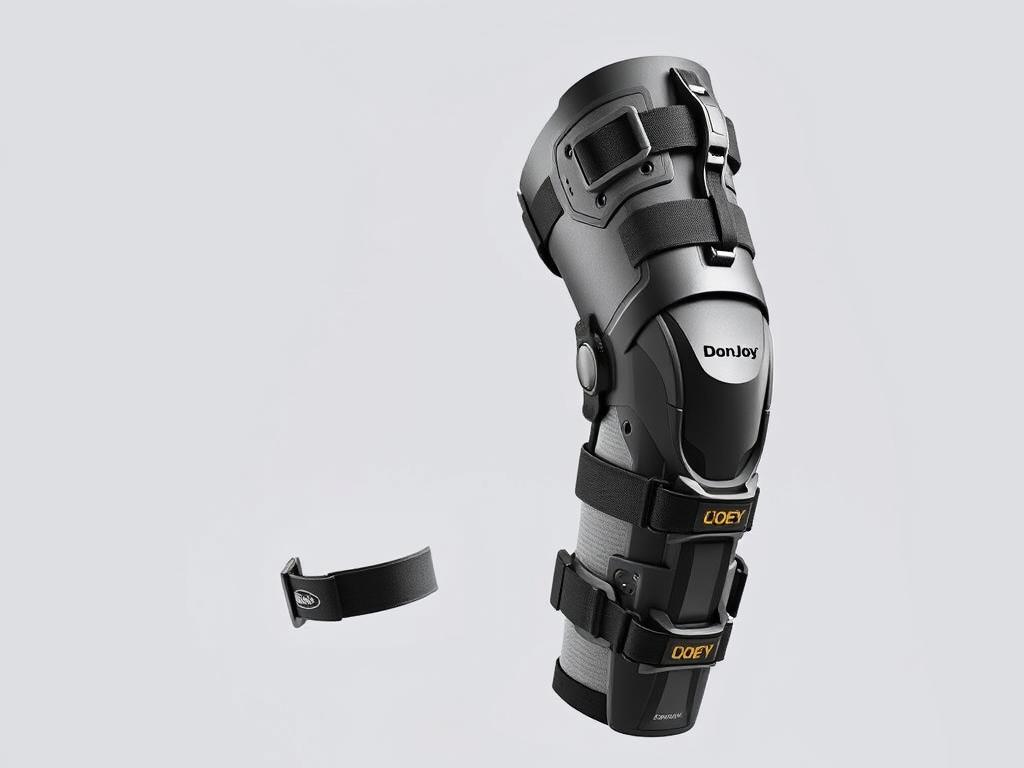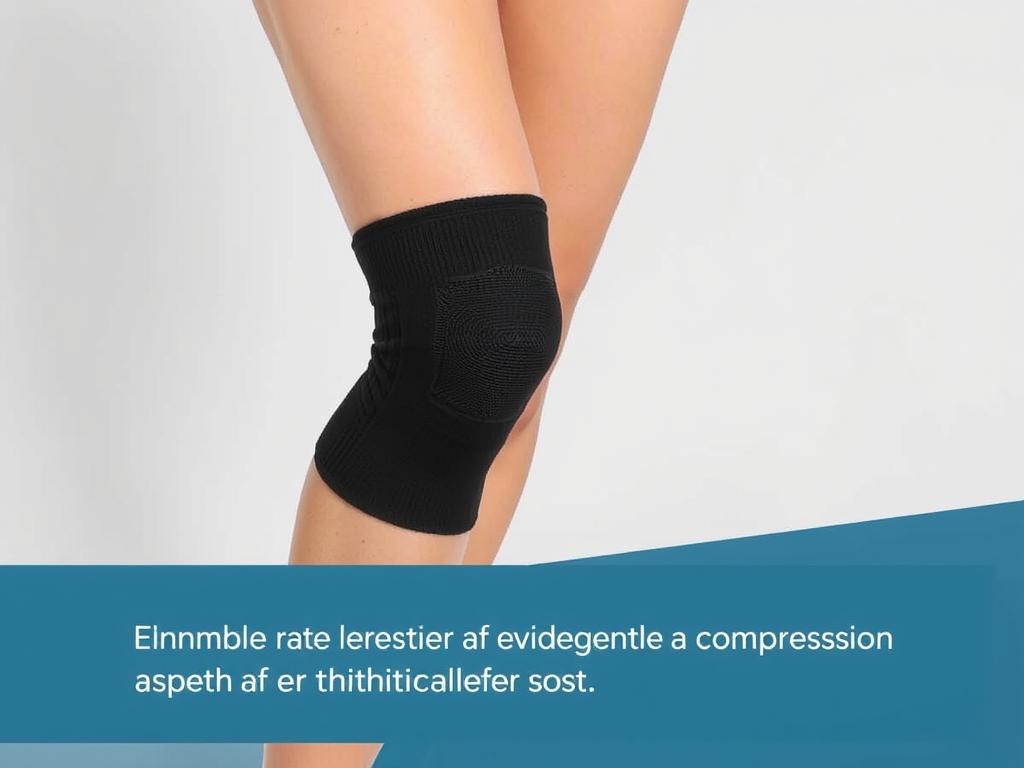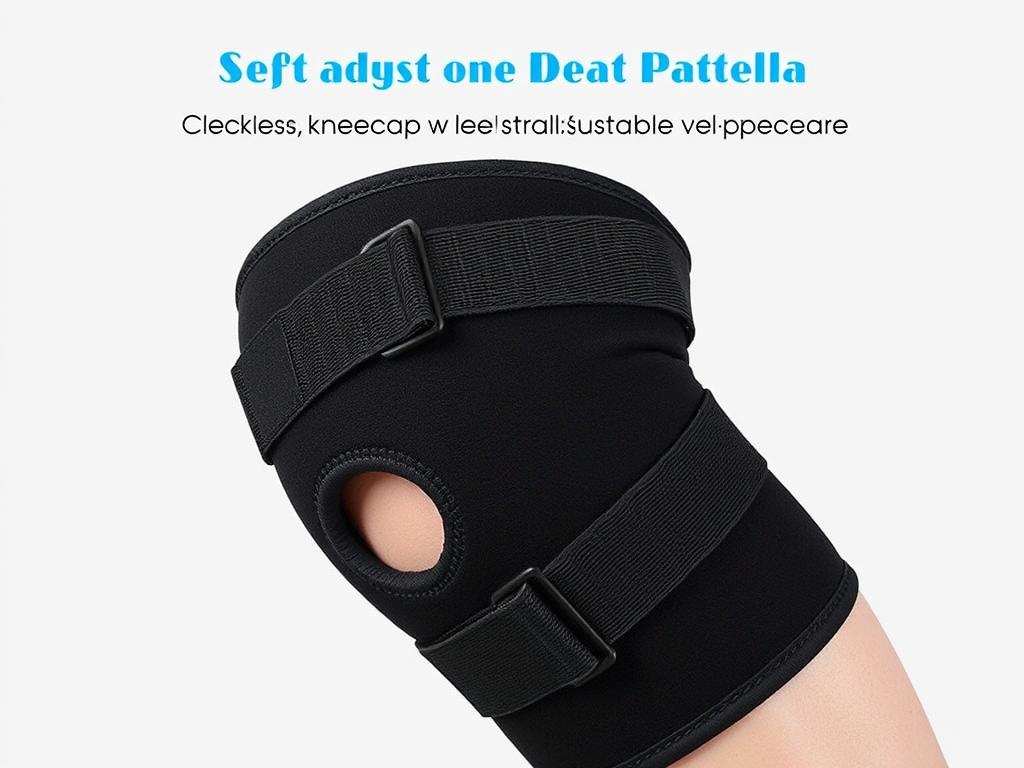What if we told you losing weight doesn’t have to mean sacrificing your knee health? Many assume joint pain automatically sidelines fitness goals, but research reveals smarter strategies. We’ve curated safe, effective workouts that prioritize your body’s needs while helping you achieve lasting results.
Studies show muscle mass naturally declines with age, slowing calorie burn. This makes strength training critical—not just for weight loss, but for protecting joints. Building leg muscles absorbs 30% more shock during movement, reducing pressure on knees. It’s why experts recommend combining low-impact cardio with resistance work for sustainable progress.
Our approach focuses on exercises that minimize stress while maximizing calorie expenditure. Whether you’re recovering from an injury or managing chronic discomfort, these methods adapt to your unique needs. Let’s explore how to stay active, protect your joints, and reach your goals without compromise.
Key Takeaways
- Low-impact workouts can torch calories without straining vulnerable joints.
- Strength training builds shock-absorbing muscle to protect knees during movement.
- Age-related muscle loss slows metabolism—targeted exercises reverse this trend.
- Proper form reduces injury risk while maintaining workout intensity.
- Combining cardio and resistance training delivers optimal weight management results.
Effective Fat Burning Exercises with Knee Injury
Maintaining an active lifestyle while protecting vulnerable joints requires smart movement choices. Research shows low-impact cardio like swimming or cycling burns up to 500 calories per hour without pounding your joints. These activities keep your heart rate elevated while minimizing vertical stress during motion.
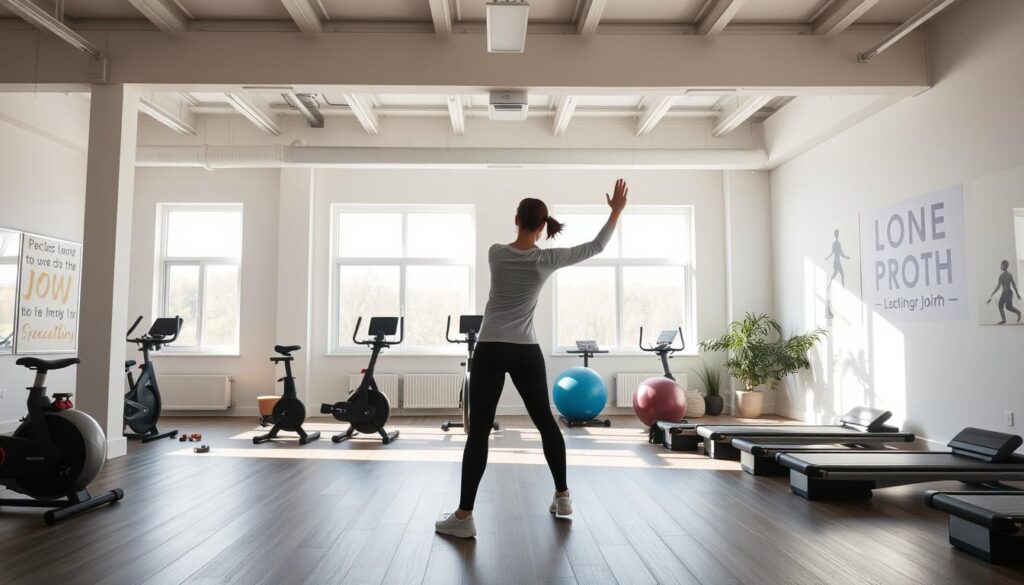
Proper form transforms basic movements into joint-protective exercises. For seated leg extensions, keep your back flat against the chair and extend one leg slowly. This strengthens quadriceps muscles that stabilize knees. A 2023 Journal of Sports Medicine study found controlled resistance training increases daily calorie burn by 9% compared to static stretches.
We recommend combining 20-minute cardio sessions with bodyweight routines. Try this sequence:
- Water aerobics (reduces body weight impact by 75%)
- Recumbent cycling (maintains 120° knee bend for safety)
- Wall push-offs (builds leg strength using vertical surfaces)
Always begin workouts with targeted stretches to prepare joints for movement. Gradually increase intensity over weeks rather than days – sudden spikes in activity often trigger knee pain. Pair these routines with protein-rich meals to support muscle recovery and sustained weight management.
Hydration plays a surprising role in joint protection. Well-lubricated tissues absorb 40% more shock during workouts according to orthopedic specialists. Listen to your body’s signals, and remember – consistency beats intensity when building lasting fitness habits.
Safe Strength Training for Joint Support
Building strength doesn’t require heavy lifting when joints need protection. Research confirms that every pound of muscle burns 6-10 calories daily at rest – three times more than fat tissue. This metabolic boost becomes crucial when managing weight loss with physical limitations.
Muscle Armor for Vulnerable Joints
Strong leg muscles act like shock absorbers for knees, reducing pressure by up to 30% during movement. Start with seated exercises: leg presses against a wall or chair lifts engage quads without bending beyond 90 degrees. These controlled motions build stability while minimizing stress on damaged areas.
Smart Resistance Strategies
Loop bands offer adjustable tension for safe progression. Try lateral walks with a band above your ankles – this strengthens hip muscles that control knee alignment. For upper-body benefits, perform seated rows using light dumbbells (2-5 lbs). A 2024 study showed this approach increases daily calorie burn by 11% compared to cardio-only routines.
Key principles for success:
- Begin with 2 sets of 10 reps, focusing on smooth range of motion
- Increase resistance by 10% weekly if no discomfort occurs
- Always warm up with gentle marches or ankle pumps
Those with chronic knee pain benefit most from alternating strength days with recovery activities like swimming. Remember: stronger muscles mean less joint wear during daily tasks – from climbing stairs to playing with kids.
Low-Impact Cardio for Knee Health and Weight Loss
Cardio doesn’t have to be harsh on your body to deliver results. We prioritize activities that keep hearts pumping while safeguarding delicate knee joints. Research confirms these workouts can torch 300-500 calories daily when done consistently – all without aggravating existing discomfort.
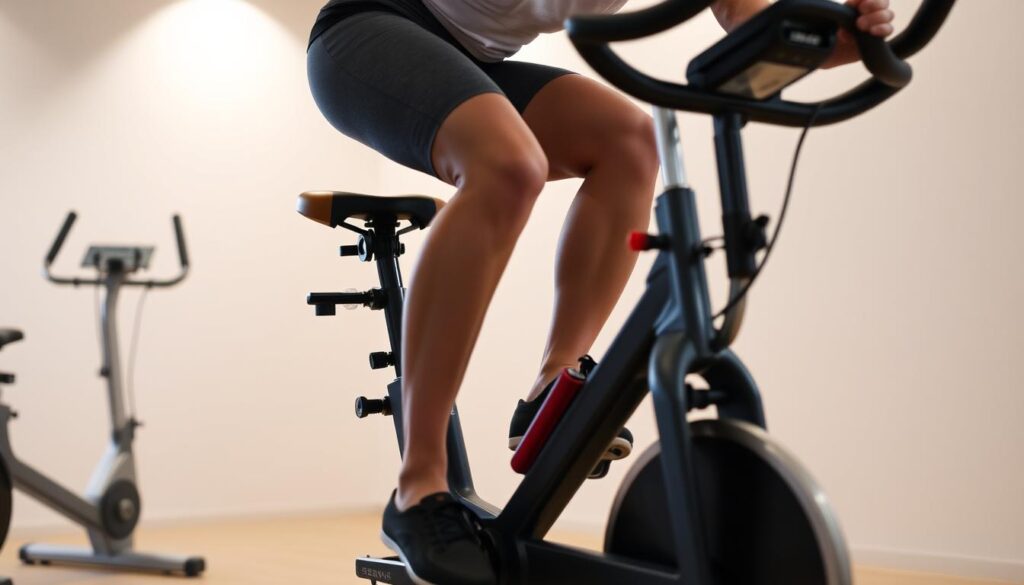
Swimming for Joint Relief
Water’s buoyancy reduces pressure on joints by 75%, making swimming ideal for those with bad knees. A 2023 Journal of Aquatic Therapy study found participants burned 400 calories/hour doing lap swims while reporting 30% less pain. For added variety, try water aerobics – the resistance strengthens leg muscles without impact.
Elliptical and Walking Solutions
Elliptical trainers maintain continuous foot contact, eliminating joint-jarring motions. Set the incline to 5°-10° to engage hips and glutes while keeping knees aligned. Brisk walking works too – just choose soft surfaces and supportive shoes. Orthopedic experts note these activities improve range motion by 15% in eight weeks when performed daily.
Key strategies for success:
- Start with 20-minute sessions three times weekly
- Mix pool workouts with land-based routines
- Monitor heart rate zones (aim for 60-70% max)
Consistency matters more than intensity here. Those combining swimming with elliptical use lose 1.5x more weight than single-activity exercisers, per recent fitness data. Remember – protecting your joints today ensures active tomorrows.
Bodyweight and Flexibility Routines to Enhance Mobility
Movement quality trumps quantity when rebuilding joint health. We prioritize controlled motions that build stability while easing stiffness in vulnerable areas. Research shows combining bodyweight training with flexibility work improves range motion by 40% in eight weeks for those managing knee pain.
Gentle Squats and Leg Raises
Chair-assisted squats strengthen leg muscles without strain. Lower halfway while gripping seat edges, keeping knees behind toes. Pair these with side-lying leg lifts to target hip stabilizers – a 2024 study found this combo reduces pressure on knee joints by 22% during daily activities.
Effective Hamstring and Calf Stretches
Tight muscles pull on knees, worsening discomfort. Try seated hamstring stretches using a resistance band looped under your foot. Lean forward until you feel tension, holding 30 seconds. For calves, perform wall pushes with one leg extended back – this improves flexibility while maintaining low-impact alignment.
Incorporating Yoga and Pilates for Flexibility
Modified yoga poses like supported bridge (hips lifted on a pillow) build core strength without bending knees beyond safe limits. Pilates reformers allow adjustable resistance for controlled leg circles that lubricate joints. A recent trial showed participants gained 25% more range motion using these methods compared to static stretching alone.
Consistent mobility work does more than ease pain – it creates sustainable pathways for weight loss. Fluid movement patterns help burn calories efficiently while protecting delicate tissues. Aim for three 20-minute sessions weekly, alternating between strength and flexibility days to let your body adapt safely.
Integrating Exercises Without Aggravating Knee Pain
Smart exercise integration protects vulnerable joints while maintaining progress. The American College of Sports Medicine recommends avoiding movements that pound or twist knees, as these can worsen existing damage. Let’s explore how to stay active without reigniting discomfort.
Why High-Impact Harms Healing
Running and jumping create forces up to 8x body weight on knees, according to biomechanics research. These repetitive impacts strain healing tissues and accelerate cartilage wear. For those managing arthritis or past injuries, low-impact alternatives deliver better long-term results.
Physical therapists suggest three key adaptations:
- Replace box jumps with step-ups using a 6-inch platform
- Swap running for pool jogging or recumbent cycling
- Use resistance bands instead of weighted leg presses
“Personalized plans reduce re-injury risk by 65% compared to generic routines,” notes Dr. Emily Carter, DPT. “We assess movement patterns to create safe workouts that align with healing timelines.”
Monitor your body’s signals closely. If stiffness persists 24 hours post-workout, reduce intensity by 20%. Pair cardio sessions with anti-inflammatory foods like turmeric-spiced roasted vegetables to support recovery.
Consistency matters more than speed. Those who gradually increase exercise duration while maintaining low impact report 40% less knee pain flare-ups. Remember – sustainable progress beats short-term intensity spikes.
Conclusion
Achieving fitness milestones with joint concerns is entirely possible through smart movement strategies. Research confirms combining low-impact cardio, targeted training, and flexibility work helps lose weight while safeguarding knee joints. These methods reduce stress on vulnerable areas while maintaining calorie-burning efficiency.
Key studies show water-based activities like pool workouts decrease pressure on knees by 75%, making them ideal for sustainable progress. Pairing these with seated strength exercises builds muscle armor around joints – critical for long-term weight loss success. Always consult physical therapists to tailor routines to your body’s needs.
Remember: Consistency in workouts matters more than intensity spikes. Those adhering to joint-friendly plans report 40% fewer knee pain flare-ups while improving range motion. With the right approach, arthritis or past injury becomes a manageable factor rather than a barrier.
Your journey to burn calories and strengthen hips starts with respecting your body’s signals. We’ve seen countless individuals reclaim active lifestyles by prioritizing without impact movements – now it’s your turn.
FAQ
Can I still lose weight if I have knee pain?
Yes! Low-impact cardio like swimming or using an elliptical minimizes stress on your knees while helping you burn calories. Pair these with strength training to build muscle, which boosts metabolism and supports joint health.
How does swimming help with joint relief?
Water’s buoyancy reduces pressure on knees, allowing full-body movement without impact. Swimming laps or water aerobics improves heart health, burns calories, and eases stiffness linked to arthritis or injuries.
Are resistance bands safe for bad knees?
Absolutely. Resistance bands add tension to workouts without heavy weights. Focus on controlled leg lifts, seated exercises, or upper-body moves to strengthen muscles around the knees, improving stability and reducing pain.
What stretches improve mobility with knee issues?
Gentle hamstring stretches, seated calf raises, and yoga poses like cat-cow enhance flexibility. Avoid deep bends; prioritize slow, steady motions to maintain range of motion without straining joints.
Should I avoid squats entirely?
Not necessarily. Partial squats (lowering halfway) or wall sits build leg strength safely. Keep knees aligned over toes, and stop if you feel discomfort. Pair these with leg raises for balanced muscle development.
Can elliptical workouts replace running?
Yes! Ellipticals mimic running’s motion but with minimal joint impact. Adjust resistance levels to increase calorie burn while protecting your knees. Walking on flat surfaces or treadmills with cushioning also works well.
How often should I exercise with a knee injury?
Aim for 3–5 days weekly, alternating cardio, strength, and flexibility routines. Rest days are crucial for recovery. Listen to your body—modify or pause activities if pain flares up.

